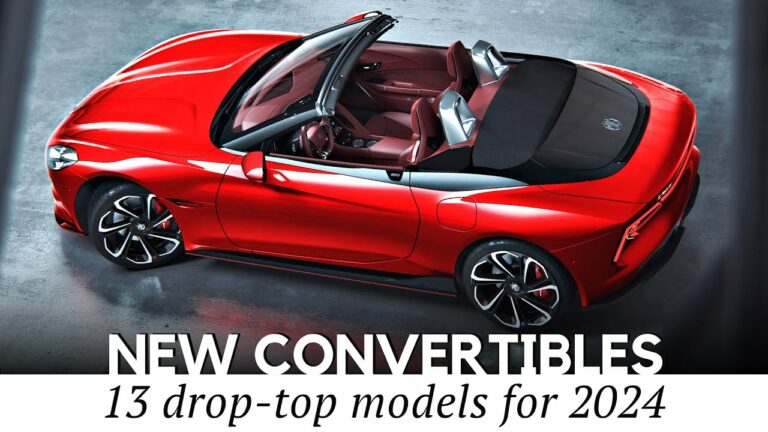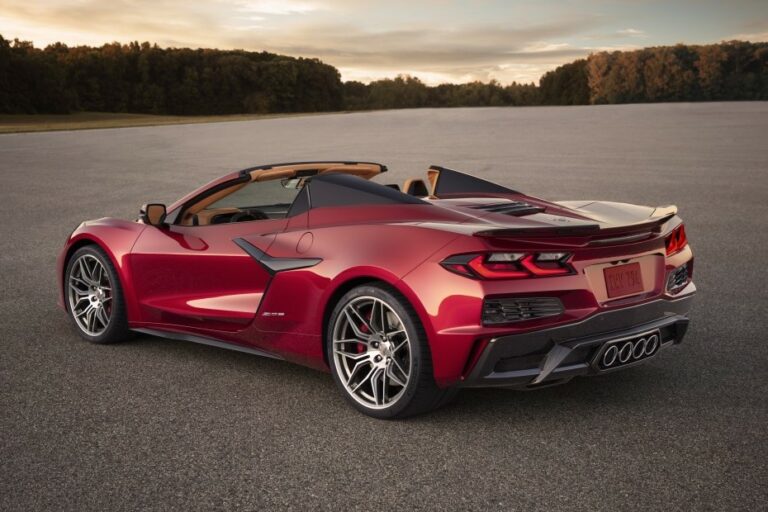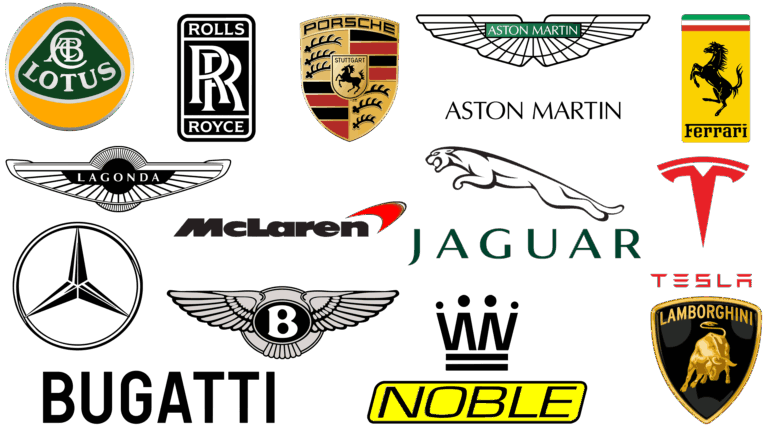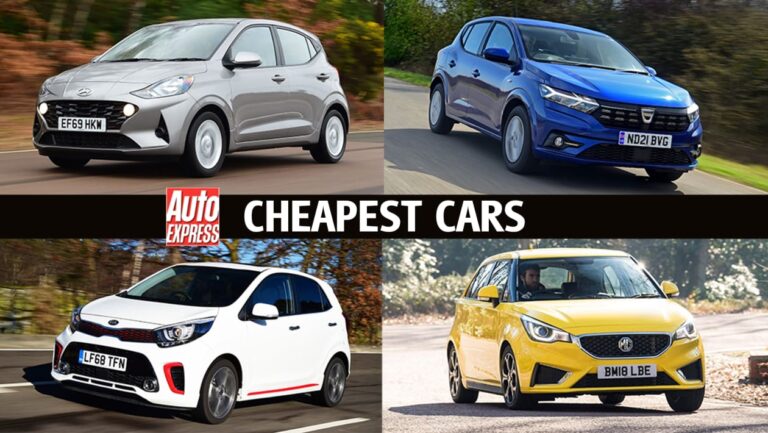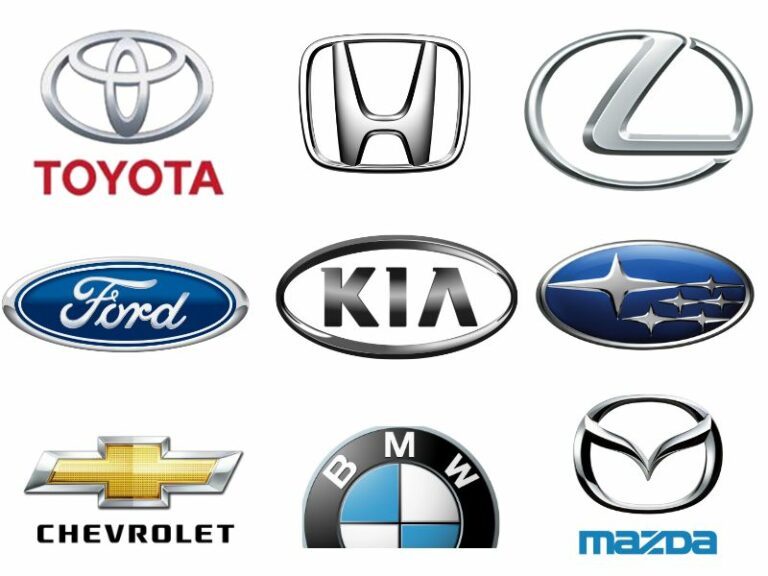Brand New Cars Under $10,000: A Comprehensive Guide to Realistic Expectations
Brand New Cars Under $10,000: A Comprehensive Guide to Realistic Expectations cars.truckstrend.com
Introduction: The Elusive Dream of a Brand New Car Under $10,000
The idea of driving a shiny new car off the lot for less than $10,000 is an appealing fantasy for many budget-conscious consumers. It evokes images of simple, reliable transportation, free from the immediate worries of previous owners or unexpected repairs. For decades, a select few models, often entry-level subcompacts, might have flirted with this price point, especially after incentives or in developing markets. However, in today’s global automotive landscape, the dream of finding a brand new car for under $10,000 is, for the vast majority of consumers, precisely that – a dream, not a reality.
Brand New Cars Under $10,000: A Comprehensive Guide to Realistic Expectations
This article aims to address this common misconception head-on. While we will thoroughly explore the concept of brand new cars under $10,000, our primary focus will be on providing a comprehensive, realistic guide to what a $10,000 budget can truly achieve in the vehicle market. We will delve into why such new cars are virtually non-existent, the actual costs involved in modern vehicle manufacturing, and, most importantly, how to maximize a limited budget to secure reliable, safe, and efficient transportation that offers the spirit of a brand-new vehicle – low cost of ownership, dependability, and peace of mind. By understanding the market realities and focusing on smart purchasing strategies, you can navigate the automotive world effectively, even with a tight budget.
Section 1: Why Brand New Cars Under $10,000 Are (Almost) Extinct
To understand why new cars under $10,000 are a rarity, we must look at the fundamental economics and regulations governing the automotive industry.
The Escalating Costs of Manufacturing
Building a car in the 21st century is an incredibly complex and expensive undertaking. Here’s a breakdown of the key cost drivers:
- Raw Materials: Steel, aluminum, plastics, rare earth metals for electronics – the prices of these commodities fluctuate and generally trend upwards.
- Labor: Skilled labor, from engineers and designers to assembly line workers, commands significant wages, especially in developed economies.
- Research and Development (R&D): Billions are invested in designing new models, developing innovative technologies (like advanced safety systems, infotainment, and electric powertrains), and improving fuel efficiency. These costs are amortized across millions of vehicles.
- Tooling and Infrastructure: Setting up a new production line, or even retooling an existing one for a new model, requires massive upfront capital investment.

Regulatory Requirements and Safety Standards
Modern vehicles are far safer and more environmentally friendly than their predecessors, but these advancements come at a cost:

- Safety Features: Airbags (multiple, advanced designs), anti-lock brakes (ABS), electronic stability control (ESC), rearview cameras, crumple zones, reinforced chassis – these are now standard or legally mandated features that significantly increase manufacturing complexity and material use.
- Emissions Standards: Strict emissions regulations worldwide require sophisticated engine management systems, catalytic converters, and exhaust after-treatment technologies, all adding to the vehicle’s price.
- Fuel Economy Mandates: Governments push for better fuel efficiency, leading to lighter materials, more aerodynamic designs, and advanced powertrain technologies (like direct injection, turbocharging, and hybrid systems), which are more expensive to produce.

Technology Integration and Consumer Expectations
Today’s drivers expect more than just basic transportation:
- Infotainment Systems: Touchscreens, Bluetooth connectivity, USB ports, navigation, and smartphone integration (Apple CarPlay/Android Auto) are now commonplace, even in entry-level models.
- Convenience Features: Power windows and locks, air conditioning, remote keyless entry, and cruise control, once considered luxuries, are now standard expectations.
- Advanced Driver-Assistance Systems (ADAS): Features like automatic emergency braking, lane departure warning, and blind-spot monitoring are becoming increasingly common and, in some cases, mandatory, adding significant cost.
When you factor in all these elements, along with logistics, marketing, dealer markups, and profit margins, it becomes clear why even the most basic new car struggles to dip below the $15,000-$20,000 mark in most major markets. The era of a brand new, road-legal vehicle for under $10,000 is largely a relic of the past, or confined to specific niche markets with vastly different safety and feature expectations (e.g., the Tata Nano in India, which was never widely available in Western markets).
Section 2: The Reality of the $10,000 Vehicle Budget – What You Can Get
Given that brand new cars under $10,000 are not a viable option, it’s crucial to pivot to what your budget can realistically achieve. For a $10,000 budget, the overwhelming reality is that you will be looking at used vehicles. However, "used" doesn’t have to mean "problematic" or "unreliable." With smart shopping, $10,000 can get you a highly dependable car that meets most of your needs, often with many years of life left.
Focusing on Reliability and Longevity
When shopping for a used car at this price point, reliability should be your absolute top priority. This means researching models known for:
- Low Maintenance Costs: Parts are affordable and readily available.
- Good Fuel Economy: Minimizes ongoing running costs.
- Strong Resale Value (even for older models): Indicates a robust, well-engineered vehicle.
- Few Recalls or Major Common Issues: Check online forums and consumer reports.
Age vs. Mileage
A common dilemma is whether to prioritize a newer car with higher mileage or an older car with lower mileage. Generally, for a $10,000 budget:
- Newer, Higher Mileage (e.g., 5-7 years old, 70,000-100,000 miles): These cars often have more modern safety features, better fuel economy, and more comfortable interiors. If well-maintained, the higher mileage isn’t necessarily a deal-breaker. A detailed service history is vital here.
- Older, Lower Mileage (e.g., 10-12 years old, 40,000-60,000 miles): These can be diamonds in the rough if they’ve been garaged and lightly used. However, age can still bring issues like rubber rot, failing electronics, or rust, even with low mileage. An independent pre-purchase inspection is critical.
The sweet spot often lies in cars that are 5-8 years old with mileage under 100,000. These vehicles have already depreciated significantly but still have plenty of life left if they’ve been cared for.
Section 3: Smart Shopping for a Used Car Under $10,000
Finding a reliable used car within your budget requires a systematic approach and patience.
1. Research, Research, Research
- Identify Reliable Models: Start by researching makes and models consistently ranked high in reliability by organizations like Consumer Reports, J.D. Power, and automotive enthusiast forums. Think Toyota Corolla, Honda Civic, Mazda 3, older Ford Focus (manual transmission), Hyundai Elantra, Kia Forte.
- Check Common Issues: Once you have a shortlist, research specific year models for common mechanical or electrical problems. For example, some automatic transmissions in certain years/models are known to fail.
- Read Owner Reviews: Real-world experiences from current and past owners can offer invaluable insights into a vehicle’s long-term dependability and everyday quirks.
2. Set Realistic Expectations
- No Perfection: A $10,000 used car will likely have some cosmetic imperfections (dings, scratches, worn interior). Focus on mechanical soundness over pristine aesthetics.
- Features: You might not get all the latest tech, but you can still find cars with essential features like A/C, power windows, and a decent stereo.
3. Where to Buy
- Private Sellers: Often offer the best prices because they don’t have overheads. Be prepared to do your due diligence, as "as-is" sales offer little recourse.
- Used Car Dealerships: Can offer financing options and sometimes limited warranties, but prices will be higher. Reputable dealerships often inspect and recondition vehicles.
- Franchise Dealerships (Certified Pre-Owned – CPO): While most CPO vehicles are above $10,000, you might occasionally find an older model that qualifies. CPO vehicles offer extended warranties and rigorous inspections, but come at a premium.
- Online Marketplaces: Autotrader, CarGurus, Edmunds, and local classifieds (Craigslist, Facebook Marketplace) are excellent resources for finding listings.
4. Inspect Thoroughly (Pre-Purchase Inspection)
This is arguably the most critical step for any used car purchase.
- Initial Visual Inspection: Check for rust, uneven panel gaps (indicating accident damage), fluid leaks, tire wear, and interior condition.
- Test Drive: Listen for unusual noises, check braking performance, acceleration, steering, and ensure all lights and features work.
- Professional Pre-Purchase Inspection (PPI): Always pay an independent, trusted mechanic to inspect any car you are seriously considering. They can identify hidden issues (frame damage, transmission problems, engine leaks) that could cost thousands to repair. This $100-$200 investment can save you from a costly mistake.
5. Review Vehicle History Reports
Purchase a vehicle history report from services like Carfax or AutoCheck. These reports can reveal:
- Accident history
- Flood damage
- Salvage titles
- Odometer rollbacks
- Service history (sometimes)
- Number of previous owners
6. Negotiate Wisely
- Know the Market Value: Use sites like Kelley Blue Book (KBB) or Edmunds to determine a fair price range for the specific make, model, year, and mileage.
- Factor in PPI Findings: Use any issues found during the inspection as leverage for negotiation.
- Be Prepared to Walk Away: There are always other cars. Don’t feel pressured into a bad deal.
Section 4: Beyond the Purchase Price – Total Cost of Ownership
The sticker price is just the beginning. The true cost of owning a vehicle includes several ongoing expenses, which are even more critical when buying a car on a tight budget.
1. Fuel Costs
- Fuel Efficiency: Prioritize models known for good MPG. Even a small difference can add up significantly over a year.
- Fuel Type: Most budget-friendly cars run on regular unleaded. Avoid models requiring premium fuel.
2. Insurance
- Get Quotes Before Buying: Insurance premiums vary widely based on the vehicle’s make/model, your driving record, age, location, and coverage type. Get several quotes before committing to a car.
- Older vs. Newer: Older, less valuable cars might have lower comprehensive/collision premiums, but liability is based on your risk profile.
3. Maintenance and Repairs
- Routine Maintenance: Oil changes, tire rotations, fluid checks, filter replacements – these are unavoidable. Budget for them.
- Unexpected Repairs: Even reliable used cars will eventually need repairs. Set aside an emergency fund specifically for car repairs (e.g., $500-$1000).
- Parts Availability and Cost: Stick to popular models where parts are readily available and often cheaper.
4. Registration and Taxes
- Annual Fees: Vehicle registration fees vary by state/province.
- Sales Tax: Don’t forget to factor in sales tax on the purchase price.
5. Depreciation
While a significant portion of depreciation has already occurred for a $10,000 used car, it still loses value over time. Choose models with a history of holding their value relatively well.
Section 5: Achievable Vehicle Options Under $10,000 (Pre-Owned Examples)
While a brand new car under $10,000 is a myth, here are examples of highly reliable used cars that can often be found within this budget. These models are celebrated for their longevity, low cost of ownership, and widespread availability of parts.
Important Note: The exact price will vary significantly based on year, mileage, condition, location, and market demand. These are general examples.
| Make/Model | Typical Model Years (Approx.) | Why It’s a Good Choice | Key Considerations |
|---|---|---|---|
| Toyota Corolla | 2008-2015 | Legendary reliability, excellent fuel economy, low maintenance costs, durable. | Basic features, not exciting to drive, some older models may feel dated. |
| Honda Civic | 2008-2015 | Reliable, fun to drive, good fuel economy, comfortable interior, strong resale. | Can command a higher price, some older automatic transmissions had issues (check specific years). |
| Mazda 3 | 2008-2014 | Sporty handling, good fuel economy, stylish design, surprisingly upscale interior. | Early models (pre-Skyactiv) might be less fuel-efficient. Check for rust in northern climates. |
| Hyundai Elantra | 2010-2016 | Good value, decent fuel economy, comfortable ride, often well-equipped for the price. | Older models may have less refined interiors, check for engine knocking in some early GDI engines. |
| Kia Forte | 2010-2016 | Similar to Elantra in value, good warranty (if still applicable for original owner), stylish. | Similar engine considerations to Elantra; ensure proper maintenance. |
| Toyota Camry | 2007-2013 | Extremely reliable, comfortable ride, spacious interior, strong resale value. | Larger than compacts, slightly lower MPG, can be pricier than Corollas. |
| Honda Accord | 2007-2012 | Reliable, refined ride, spacious, good performance, strong resale value. | Similar to Camry; check for V6 transmission issues in some older models. |
| Ford Focus | 2008-2011 (Manual Trans.) | Fun to drive, good handling, often affordable. | Crucially, avoid automatic (PowerShift) transmissions in 2012-2016 models. Stick to manual. |
| Nissan Versa | 2007-2014 | One of the cheapest new cars when launched, meaning older models are very affordable. | Basic features, less refined, CVT issues in some years (test thoroughly). |
| Scion xB / xD | 2008-2014 | Toyota reliability in a quirky, practical package. Spacious interior for its size. | Unique styling isn’t for everyone, can be hard to find. |
Disclaimer: This table provides examples of models that can typically be found in the under-$10,000 used car market. The specific condition, mileage, and features of individual vehicles will dictate their exact price. Always conduct thorough research and a pre-purchase inspection.
Section 6: Alternative Transportation Solutions
For some, even a reliable used car at $10,000 might be out of reach, or simply not the most efficient solution. Consider these alternatives:
- Public Transportation: Buses, trains, subways, and trams can be incredibly cost-effective, especially in urban areas.
- Cycling: For short to medium distances, cycling is healthy, environmentally friendly, and free after the initial bike purchase.
- Ride-Sharing Services: Services like Uber and Lyft can be economical for occasional trips, but costs add up quickly for regular commutes.
- Car-Sharing Programs: Services like Zipcar allow you to rent a car by the hour or day, providing access to a vehicle without ownership costs.
- Walking: The simplest and cheapest form of transport for very short distances.
Combining these methods can often provide more flexibility and save more money than sole car ownership, especially if you live in a city.
Section 7: Frequently Asked Questions (FAQ) about Cars Under $10,000
Here are answers to common questions about buying a vehicle with a $10,000 budget.
Q1: Can I really not buy a brand new car for under $10,000 anymore?
A1: In most developed markets (North America, Europe, Australia, etc.), no. Manufacturing costs, safety regulations, and consumer expectations have pushed the starting price of even the most basic new cars well above $10,000, typically starting around $15,000-$20,000 for subcompacts.
Q2: What’s the absolute cheapest new car I could find, even if it’s over $10,000?
A2: The cheapest new cars generally hover in the $15,000-$18,000 range. Examples might include the Mitsubishi Mirage, Chevrolet Spark, or Nissan Versa (basic trims, before taxes/fees). These are often stripped-down models with manual transmissions and few features.
Q3: Is it better to buy a slightly older car with low mileage or a newer car with high mileage for under $10,000?
A3: It depends on the specific car and its maintenance history. A newer car with higher mileage (e.g., 5-7 years old, 70k-100k miles) that has been meticulously maintained is often a better bet than an older car with very low mileage (e.g., 12-15 years old, 40k miles) that might have sat unused, leading to dried-out seals, fluid degradation, and other age-related issues. Always prioritize a comprehensive service history and a pre-purchase inspection.
Q4: What are the hidden costs of buying a used car?
A4: Beyond the purchase price, expect to pay for sales tax, registration fees, insurance, potential immediate repairs (even after inspection), and ongoing maintenance (oil changes, tires, etc.). It’s wise to budget an extra $1,000-$2,000 beyond the purchase price for these initial costs and a repair fund.
Q5: Should I get a warranty on a used car under $10,000?
A5: Most cars in this price range are sold "as-is" by private sellers. Some dealerships might offer limited warranties, but they often come with a premium or have very restrictive terms. A pre-purchase inspection by an independent mechanic is a much better investment than a potentially useless warranty. An emergency fund for repairs is your best "warranty."
Q6: Are there any specific red flags I should watch out for when buying a used car under $10,000?
A6: Yes! Be wary of:
- Salvage or rebuilt titles: Indicates the car was declared a total loss by an insurance company.
- Flood damage: Can lead to long-term electrical and rust issues.
- No service records: A lack of history makes it impossible to verify proper maintenance.
- "Check Engine" light on: Never buy a car with this light on unless you know the exact, minor cause and it’s reflected in a lower price.
- Unusual noises, smells, or fluid leaks: Obvious signs of mechanical trouble.
- Seller pressuring you: Don’t rush into a decision.
- Price significantly below market value: Often a sign of hidden problems.
Conclusion: Redefining "Value" in Vehicle Ownership
The quest for a "brand new car under $10,000" is a journey that, in today’s market, will inevitably lead to disappointment if taken literally. The economic realities of modern vehicle production, coupled with stringent safety and environmental regulations and escalating consumer demands for technology, have rendered this price point obsolete for new vehicles.
However, recognizing this reality is not a dead end; it’s a redirection. By shifting focus from "brand new" to "best value for money," a $10,000 budget transforms from a limitation into a significant opportunity. It allows access to a vast market of pre-owned vehicles that, with careful research, smart shopping, and a crucial pre-purchase inspection, can provide years of reliable, affordable transportation.
The true "brand new car" experience for under $10,000 today isn’t about the odometer reading zero; it’s about achieving the peace of mind that comes from owning a dependable vehicle, understanding its total cost of ownership, and making an informed decision that aligns with your financial realities. In this context, a well-maintained, reliable used car from a reputable manufacturer can offer just as much, if not more, "new car feeling" in terms of functionality and satisfaction than the mythical brand new alternative. Your $10,000 can indeed buy you excellent, practical mobility – just not in the wrapper you might initially have imagined.

